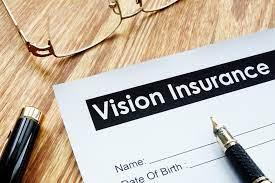Vision insurance stands as a beacon of assurance for eye health and clarity of sight. Amidst the array of insurance offerings, it specifically caters to ocular health, ensuring that individuals have access to comprehensive eye care services. This coverage extends beyond routine check-ups, encompassing a spectrum of services ranging from eye exams to eyewear.
The Benefits of Vision Insurance
Clearer Vision, Brighter Future
By facilitating regular eye examinations, vision insurance contributes significantly to early detection of eye-related issues. It serves as a proactive approach toward maintaining optimal eye health. Early detection often means early intervention, which can potentially mitigate the severity of various eye conditions.
Accessible Eye Care Services
Vision insurance breaks down financial barriers, providing access to a wide array of eye care services and products. From prescription eyeglasses to contact lenses, this coverage ensures that individuals can obtain necessary aids without straining their budgets.
Choosing the Right Vision Insurance
Evaluating Your Needs
Selecting the ideal vision insurance necessitates a thorough understanding of personal eye care needs. Factors like frequency of eye check-ups, the need for corrective eyewear, and any pre-existing eye conditions should inform this decision.
Assessing Coverage Options
Different vision insurance plans offer varying levels of coverage. Analyzing these options vis-à-vis individual requirements is imperative. Some plans may excel in coverage for prescription eyewear, while others might prioritize comprehensive eye exams.
Optimizing Your Eye Health Journey
Regular Check-ups: A Necessity, Not a Luxury
Under the umbrella of vision insurance, regular eye check-ups become not just a recommendation but a feasible and accessible reality. These check-ups not only assess vision but also screen for potential eye diseases, ensuring timely intervention if necessary.
Embracing Preventive Measures
Vision insurance emphasizes preventive measures, encouraging individuals to adopt habits that promote eye health. From the 20-20-20 rule to protective eyewear in specific environments, these measures contribute significantly to maintaining healthy eyesight.
Conclusion
Vision insurance transcends being a mere financial tool; it embodies an investment in clarity, health, and a brighter future. With its comprehensive coverage and emphasis on proactive eye care, it stands as a beacon guiding individuals toward optimal eye health and clear vision. Choosing the right vision insurance can pave the way for a journey marked by clarity, accessibility, and proactive eye care.
